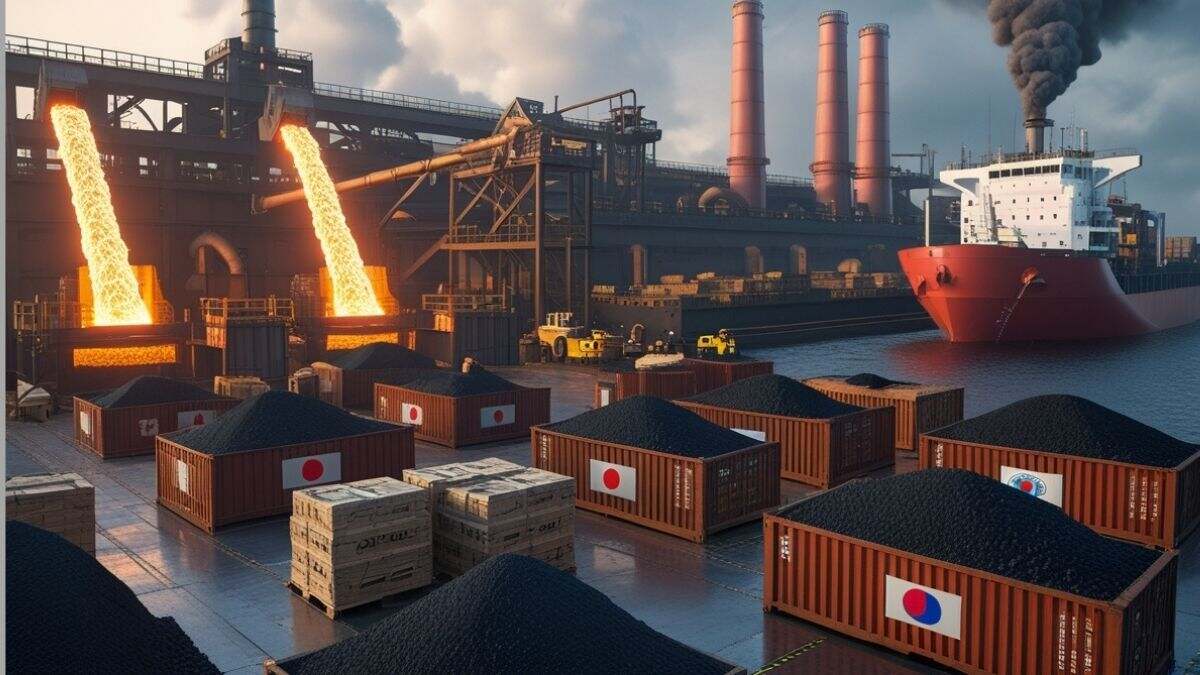India’s mining environment is changing as a result of the competition for rare earths. Are these the companies that investors can afford to overlook, while a few players discreetly position themselves for the future with the support of demand and policy?
When China, the world’s largest supplier of rare earth elements, attempted to limit shipments to India, the nation came dangerously close to becoming vulnerable. That incident demonstrated how reliant India is on a small number of suppliers for these vital minerals, which are essential for everything from defense systems to electric cars and renewable energy.
The government has made rare earths and essential minerals the focal point of its strategic resource strategy in recognition of this. Reducing dependence on imports and developing local capacity are the goals of programs like the vital mineral block auction, policy support, and National Critical Mission plans to establish a domestic processing ecosystem.
This change is creating new chances for investors. As the government speeds up the discovery, extraction, and processing of these resources, a few publicly traded corporations stand to gain.
India’s top mining company, Gujarat Mineral Development Corporation, is focusing on vital minerals.
With a wide strategic vision, Gujarat Mineral Development Corporation (GMIDC) principally works in the mining and electricity industries. By 2030, “Project Shikhar,” which seeks to double growth, will have realized its ambition. Furthermore, the Indian government has raised its investment goal for rare earth development at GMDC from 12.5 billion to 50 billion rupees.
In order to create the strongest magnets, GMDC’s portfolio comprises high-purity light rare earth oxides including neodymium and praseodymium. These permanent magnets are essential for wind turbine and electric vehicle engines.
Ambadungar, a hamlet in Gujarat’s Chota Udepur district, is home to one of the biggest rare earth deposits in the world. Indeed, in July, GMDC allegedly set aside ₹30–40 billion for non-lignite, rare earth, and key mineral projects.
Project Shikhar outlines the next stage of GMDC’s expansion
The business has developed a substantial five-year strategic investment plan of ₹134 billion to open up new opportunities in the fields of rare earth, coal, lignite, and copper. Of this capital investment, around 46% goes toward purchasing land, 15% goes into restoration and rehabilitation, and 30% goes for equipment and plants.
Its primary activities are electricity generating and mining. GMDC is the second-largest lignite producer and the country’s top merchant seller. The output of lignite was 8.02 million metric tonnes (MMT) in FY25. With its four active mines, the firm is aiming for a volume expansion of 10% to 15% in its present lignite business this year.
Furthermore, GMDC is putting six additional lignite mines in South Gujarat and Kutch into production, adding around 483 MMT of reserves overall. With levels anticipated to start contributing in FY27 and beyond, these new mines are mostly long gestation projects. By the end of this decade, it hopes to generate 15 MMT of lignite from these mines.
pursuing potential in rare earth, coal, and copper
By purchasing the three significant coal blocks of Baitarni West, Burapahar, and Kudanali-Lubri, it has also branched out into Orissa. The flagship mine of GMDC, Baitarni, is anticipated to grow into its biggest, with a maximum yearly capacity of 15 MMT. This year (FY26) is expected to be groundbreaking, and sales and revenues may follow.
Additionally, the corporation has more than 2.5 billion tonnes of limestone deposits in Kutch that are suitable for cement. Three stages of commercialization are underway to position Kutch as a major cement manufacturing center. Phase I includes a 40-year supply deal with JK Cement.
Subsequently, Ambaji has a copper project with over 10 MMT of copper, zinc, and lead resources found. The mining plan’s approval is a step forward, and income is anticipated to start coming in at the end of FY30.
Good financials, but values are more advanced than ever.
Financially speaking, FY25 had the company’s second-highest yearly sales and third-highest profit before tax (PBT) ever. In FY25, total revenue increased 17% year over year to ₹32 billion. With a 31% margin, EBITDA (earnings before interest, tax, depreciation, and amortization) climbed 11% to ₹9.9 billion.
Profit after tax (PAT) jumped 12% to ₹6.8 billion, while PBT increased 10% to ₹8.9 billion.
Q1FY26 saw a slowdown in growth. PAT fell 10.9% to ₹1.6 billion, while revenue fell 10.4% year over year to ₹7.3 billion.
In terms of value, GMDC is now trading at an EV/EBITDA multiple of 19.6x, much higher than the median for the last 10 years of 6.6x. Given that the industry mean EV/EBITDA ratio is now 10.7x, GMDC is likely trading at a premium to its competitors.
The Ministry of Mines, Government of India (GoI), is in charge of the administration of Hindustan Copper (HCL), the country’s only integrated copper producer and a Central Public Sector Enterprise (CPSE).
The only fully integrated copper production in India
About 45% of India’s copper ore deposits and resources are accessible to HCL, which also holds all of the country’s active copper ore mining leases. India’s only vertically integrated manufacturer of refined copper is HCL. HCL has a number of key locations around India.
This comprises the Indian Copper Complex in Ghatsila, Jharkhand; the Gujarat Copper Project in Gujarat; the Taloja Copper Project in Maharashtra; the Malanjkhand Copper Project in Madhya Pradesh; and the Khetri Copper Complex in Rajasthan.
The business is using its integrated mining-to-refining platform to gain a foothold in the essential minerals market in addition to copper. Along with Indian Oil, GAIL, and RITES, the corporation has declared its intention to bid on important mineral and rare earth blocks. To indicate this change, the business recently inked a Memorandum of Understanding with Oil India for the discovery of key minerals. The goal of this collaboration is to take use of Oil India’s experience in the production and discovery of vital minerals.

